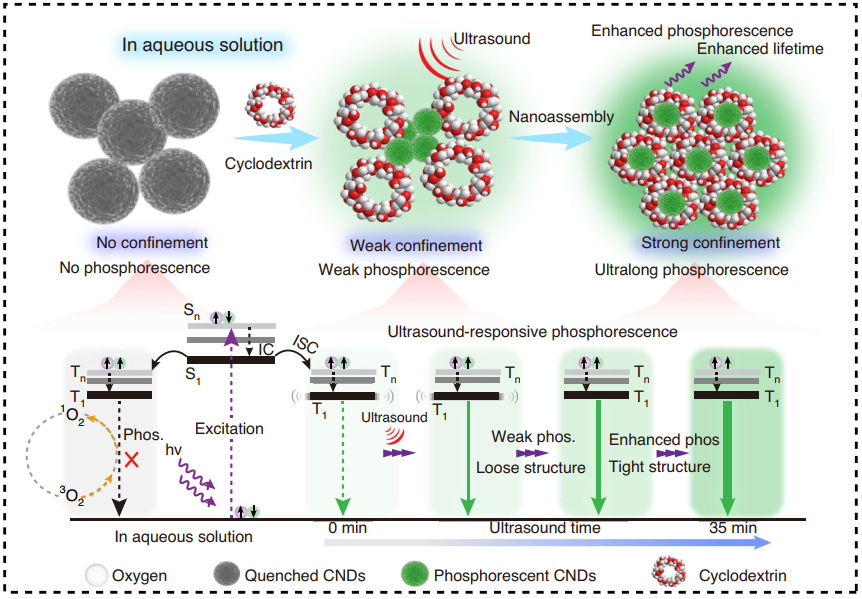| [栏目图片] |
Dr. Liang Yachuan from the Academy for Quantum Science and Technology Publishes Latest Research Paper in Top-Tier Optics Journal Light: Science & Applications |
|||
|
|
|||
|
|||
|
Recently, the research group led by Dr. Liang Yachuan from the School of Electronics and Information and the Academy for Quantum Science and Technology published a high-level research paper titled "Ultrasound-responsive phosphorescence in aqueous solution enabled by microscale rigid framework engineering of carbon nanodots" in Light: Science & Applications, a top-tier journal in the field of optics (CAS Q1, TOP journal, IF=23.4). Dr. Liangis the first author, and Shao Haochun, a 2023 graduate student from the School of Electronics and Information, is the second author. Zhengzhou University of Light Industry is the first affiliated institution. Solid-state phosphorescent materials with stimulus-responsive properties have been widely applied across multiple fields. However, the ultrafast deactivation of triplet excitons and their sensitivity to aqueous environments have limited their further applications. Precisely controlling the triplet exciton stimulus sites of carbon dots in aqueous solutions to achieve long-lifetime aqueous phosphorescence remains a significant challenge. This study proposes a microscale rigid framework engineering strategy that ingeniously utilizes the properties of cyclodextrin. Through ultrasound-stimulated self-assembly of cyclodextrin in aqueous solution, the rigidity of carbon nanodots (CNDs) was successfully enhanced to activate triplet excitons, thereby regulating their phosphorescence properties. The experiment successfully produced ultrasound-responsive phosphorescent carbon nanodots with a lifetime of 1.25 seconds in aqueous solution. This material exhibits high sensitivity to ambient ultrasound and demonstrates a linear response to ultrasound during the regulation process. These ultrasound-responsive phosphorescent carbon nanodots show tremendous potential as sensing units for ultrasonic radar detection and in vivo afterglow imaging. This research was supported by the National Natural Science Foundation of China, the Outstanding Youth Foundation of Henan Province, and the Quantum Science and Technology Innovation Team. Journal article link: https://doi.org/10.1038/s41377-025-01965-0 |
|
Copyright © 2014 Zhengzhou University of Light Industry, China. All Rights Reserved. Add: No.136 Ke Xue Avenue,Zhengzhou,HenanProvince,PRC. Zip Code:450000 It is recommended that you use IE7 and above version of the browser to visit the web site. |
